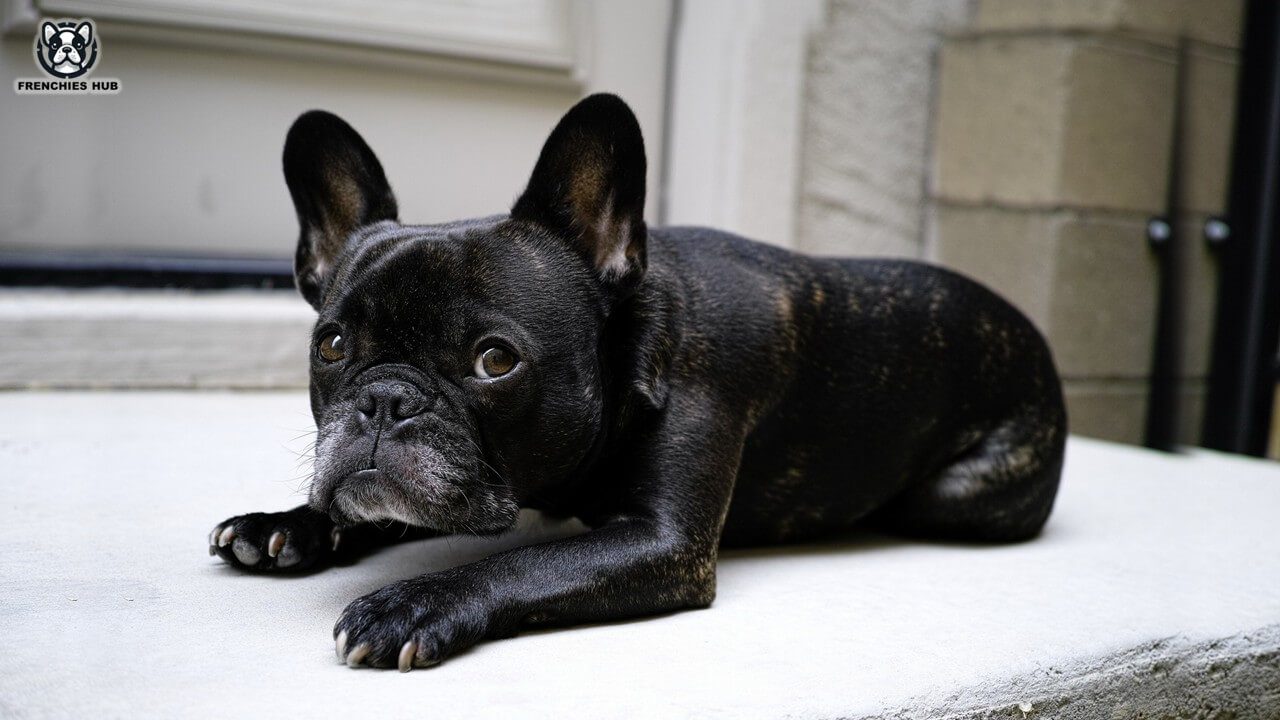At first glance, the French bulldog might seem like just another small, cute pet, perfect for cuddles rather than any practical utility. However, as a long-time enthusiast and observer of this particular dog breed, I’ve come to appreciate a lesser-known attribute that significantly enhances their charm: a strong sense of smell. Contrary to popular belief, these dogs are not just decorative companions but possess a keen sense of smell, making them surprisingly adept at tasks you might associate with more traditional guard dogs.
This capability is particularly fascinating when you consider their compact size and sociable nature. Despite their notoriety for being lapdogs, French bulldogs have shown time and again that they can track scents with an efficiency that belies their sensitive nature. Comparing them to humans, it’s clear that they inhabit a wholly different sensory world. While they may not rival bloodhounds in scent-tracking prowess, their ability to smell and track various scents is nonetheless impressive. This aspect not only showcases the diverse capabilities of different dog breeds but also reminds us of the hidden layers and talents that our canine companions possess, waiting to be acknowledged and appreciated.
Do French Bulldogs Have Good Sense of Smell?
The question of whether French Bulldogs have a good sense of smell often arises among pet owners and enthusiasts alike. Despite their brachycephalic, short-nosed structure, which might suggest a compromised ability to smell, these charming canines exhibit a surprisingly refined sense of smell. This sense of smell is not only remarkable when it comes to registering scents that humans cannot even detect but also plays a crucial role in their interaction with the world. The receptors in their noses are significantly more numerous than in humans, boasting about 40 more in count, which aids them in breathing and navigating their environment, even under extreme temperatures.
Their olfactory prowess extends to everyday activities, where they can smell their owner coming from another room or detect their food and favorite toy, irrespective of the distance or the materials these items are made of. This keen ability enhances their quality of life and underscores the importance of understanding and caring for their sense of smell. While they may not rival the scent-tracking capabilities of some other dog breeds, their smelling power is undeniably excellent for their size and build.
Considering these factors, it’s clear that useful measures to maintain and protect their sense of smell are vital for their well-being. As a pet owner, I’ve found that being mindful of their snout’s limitations and providing a stimulating environment that engages their senses can significantly impact their happiness and health. It’s a fascinating aspect of French Bulldogs that offers a deeper understanding and appreciation for these cute companions, proving that they are indeed sensitive and capable in ways that go beyond their endearing appearance.
Exploring Smell Sensitivity: Between French Bulldogs and Humans
When we delve into a comparison between the sense of smell of the French bulldog and humans, the difference is stark and fascinating. French bulldogs possess a great sense of smell, one that is refined through a variety of receptors in their noses. This allows them to sort through and know different scents with an astonishing level of sensitivity, a capability that humans can hardly fathom. It’s estimated that these furry canines have up to 10,000 times as many smelling cells as humans, highlighting a profound gap in olfactory abilities between the two species.
This sensory advantage enables French bulldogs to experience the world in a way we can only imagine. They consciously use their superior sense of smell to navigate their environment, detect smells with precision, and interact with their surroundings with a level of detail that surpasses human capacity. As a dog owner, witnessing this incredible aspect of their sensory perception offers a reminder of the complexity and adaptability of candid species. It underscores the importance of appreciating and catering to their sensory needs, as their perception of the world is significantly influenced by their remarkable olfactory abilities.
Exploring Smell Sensitivity: Between French Bulldogs And Humans
When comparing the scenting abilities of dog breeds, it’s intriguing to note how the French bulldog stands out, especially given its brachycephalic breed characteristics. These adorable dogs, with their big and round eyes, flat nose, and underbite, present a unique case. Typically, a dog’s sense of smell is closely related to the length of its snout. Despite their short snouts, French bulldogs exhibit a remarkable adaptability in navigating their environment, although they might not match the olfactory prowess of German Shepherds, Bloodhounds, or Labrador Retrievers, as highlighted by National Geographic studies.
Frenchie Compare Dog Breeds with Best Sense of Smell
Delving into the world of olfactory receptors, we see a vast difference between humans and canines. Dogs, especially those from Herding, Hounds, Hunting, and Sporting groups, have significantly more olfactory receptors, which equip them exceptionally for various scent-related tasks.
Pointer
The Pointer is renowned among pointing breeds for its bird-finding ability. Thanks to its long, deep muzzle and wide-open nostrils, it excels at sniffing out feathered finds, making it a standout for its nose capabilities.
German Shorthaired Pointer
Similarly, the German Shorthaired Pointer boasts an impressive scenting and trailing ability. Known to hold their large brown nose close to the ground scent, these dogs have been instrumental in fields as diverse as tracking jaguar scat in Costa Rica, aiding researchers in their studies.
Coonhound
The versatility of Coonhound breeds – from Black and Tan to Treeing Walker – is remarkable. With their hot noses or cold-nosed abilities, they can follow both fresh and old trails, showcasing their adaptability in various tracking scenarios.
English Springer Spaniel
The English Springer Spaniel, whether field-bred or show-bred, has a liver-colored or black nose with broad nostrils capable of detecting a range of odors from explosives to human remains. This versatility makes them invaluable in both hunting and professional scent detection fields.
Belgian Malinois
Belgian Malinois are highly regarded among police and military forces, as well as search and rescue dogs. Their keen sense of smell allows them to detect explosives, track prostate cancer, and locate cheetah scat, underscoring their critical role in safety and conservation efforts.
Labrador Retriever
The Labrador Retriever, a beloved companion dog, also excels in arson, drug, and bomb detection, as well as search and rescue missions. Their fine nose is a testament to the breed’s versatility and utility across a range of applications.
German Shepherd
The German Shepherd stands out among herding breeds for its 225 million scent receptors and ability to air scent. Employed extensively by police, military, and search and rescue groups, they demonstrate remarkable stamina and persistence in trailing tasks.
Beagle
Despite being smaller, the Beagle matches the German Shepherd in the number of scent receptors. Their prowess in following both air and ground scent has made them invaluable, especially in detecting contraband at airports, with a success rate that highlights their ability to recognize nearly 50 distinct odors.
Basset Hound
The Basset Hound, with its French origin, is designed to follow a scent trail closely to the ground. Their long, heavy ears and dewlap play crucial roles in capturing scents, positioning them just behind the Bloodhound in scenting ability according to the American Kennel Club.
Bloodhound
Bloodhounds, equipped with 300 million scent receptors, excel in man-trailing abilities. Their tracking dog design, complete with long ears and a cape of loose skin around their head and neck, enables them to follow both ground and air scent, earning them a place in courtrooms for their reliability.
The exploration of the French Bulldog’s sense of smell, in contrast with other breeds, reveals the vast and fascinating world of canine olfaction. Each breed, from the French Bulldog to the Bloodhound, brings its unique strengths to the table, proving that size often doesn’t matter in the realm of scent detection and tracking.
Boosting French Bulldogs’ Smell
Owning a Frenchie dog presents a unique set of challenges and joys, particularly when it comes to enhancing their natural abilities. Given their distinct physique and keen senses, certain measures can significantly bolster their smelling ability.
Scent Training Strategies
The cornerstone of any dog’s development, especially for French dogs known for their investigating prowess through scent, is effective training. Introducing your furry friend to new environments and objects to recognize can greatly enrich their sensory experience. A simple activity like teaching them to fetch a newspaper placed near the door each morning not only adds routine but also sharpens their cognitive skills. By associating specific names through repetition, dogs not only learn quicker but also develop a finer sniffing acumen, essential for distinguishing between various smells. Engaging them with a snuffle mat filled with hidden rewards is not just fun but also an excellent way to improve their sniffing ability as they forage for food and treats.
Treat-Based Smell Enhancement
The smell of treat plays a pivotal role in dog training, acting as a highly enticing motivator. Maintaining a pocketful of treats—preferably ones that are tasty but not greasy or sticky to avoid telltale stickiness on your hand—can encourage your pet to perform and master new tricks. Associating a specific trick with a reward cements this learning, making each successful attempt more rewarding. Gradually, introducing an even more tempting smell can elevate their sensory training, making it a delightful experience for both of you.
Exercise Adjustments for Smell
French bulldogs, with their short, stout build, have different physical needs and capabilities. The recommended average daily workout time is between 15 to 30 minutes. Overexertion can lead to breathing issues due to their unique shape and body structure, highlighting the need to tailor exercise routines that do not tire them excessively. However, staying active is crucial for their health, especially to combat prevalent joint and back problems. A balanced exercise routine can significantly improve their quality of life, ensuring they stay fit while managing their physical uniqueness effectively.
Conclusion
In exploring the olfactory capabilities of French bulldogs, it’s evident that these charming canines hold their ground when it comes to their sense of smell. While not on par with some of the more scent-driven dogs, their smelling abilities are decidedly strong, especially when contrasted with humans. This difference underscores not only the diverse range of sensory abilities among dog breeds but also highlights the French Bulldog’s adaptability in environments that require keen senses. Whether it be locating something missing or navigating through spaces where others may be lost, the French Bulldog proves to be an adept companion, showcasing that the size or breed does not limit a dog’s innate skills.

